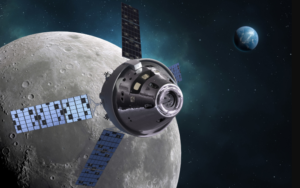
NASA has awarded Lockheed Martin [LMT] a contract to build up to 12 new Orion deep exploration vehicles for the agency’s Artemis crewed lunar exploration program, the company said Sept. 23. The Orion Production and Operations Contract (OPOC) is an indefinite-delivery/indefinite-quantity (IDIQ) contract that includes an initial three Orion spacecraft worth $2.7 billion for Artemis missions 3-5. NASA then plans to order three more Orion spaceships for Artemis missions 6-8 worth $1.9 billion in fiscal year 2022, according to a…

 By
By 










